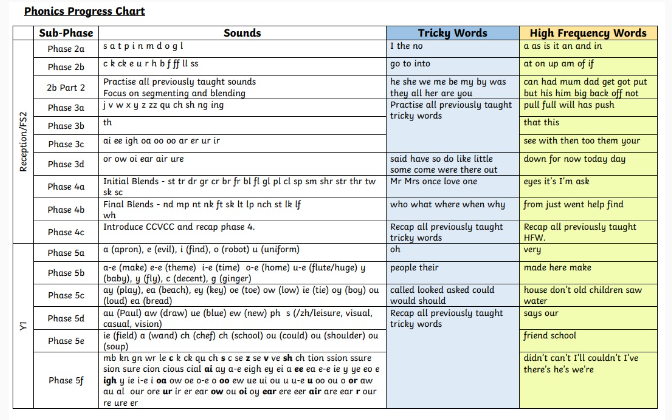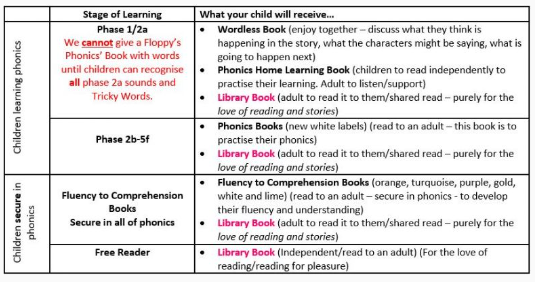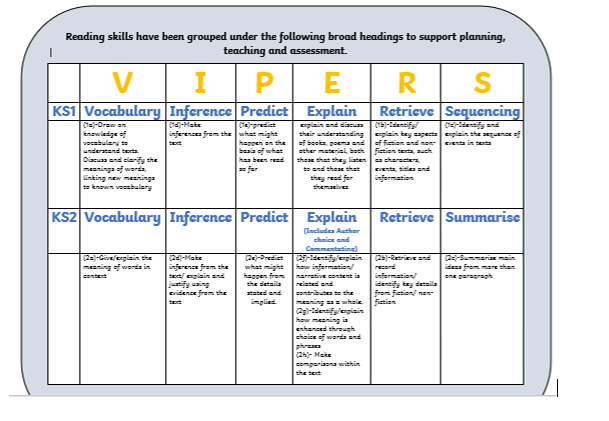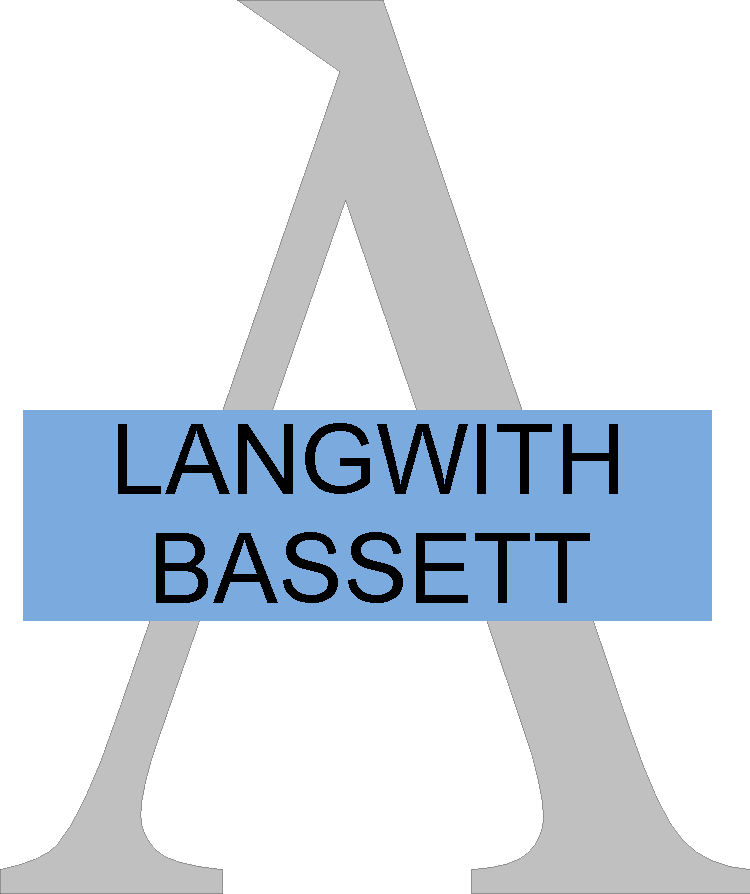Phonics/Reading
At Langwith Bassett Junior Academy, reading is at the heart of our curriculum, especially ‘reading for learning’. It is our intention that every child will be a reader and read fluently with prosody and with confidence, and they will be encouraged to develop a lifelong love of reading. We want all children to leave Langwith Bassett Junior Academy with a rich vocabulary that opens doors to a world of knowledge and opportunities. Reading is a gateway to lifelong learning. Children who develop a love for reading are more likely to continue learning throughout their lives, staying curious, informed, and engaged in the world around them.
Phonics
At Langwith Bassett Junior Academy, we use the ACET phonics scheme to teach phonics across school. This is a systematic approach to the teaching of synthetic phonics and is a highly successful way of developing children’s reading, spelling and language skills.
How is Phonics taught?
Phonics is taught through daily phonics lessons that are fast-paced and repetitive, so children make lots of progress, quickly. The phonics groups are streamed, which means children are in a group that matches their ability based on assessments. The groups are taught by a variety of phonics experts and are of varying sizes. All phonics lessons are structured the same, meaning all children receive the same high-quality learning experiences.
When do pupils learn Phonics?
Phonics starts in Nursery. The focus isn’t on reading words just yet but on learning all the vitally important skills to help to move onto reading words. Listening skills are developed and pupils will practice making sounds with their bodies and their mouths. They also develop their Fine Motor Skills, ready for holding a pencil.
In Reception, from the very first day, all pupils start Phase 2 phonics (this means learning the letter sounds and beginning to put them together to read and spell words). The progression of Phonics throughout Reception and Year 1 follows the structure below. Each lesson follows the structure of ‘Review, Teach, Practise, Apply’ to ensure that children are consolidating phonic knowledge and skills over time and that they are able to apply them in context. During lessons there are opportunities for discussing new vocabulary and ensuring letter formation is correct.

In Year 2, pupils progress onto spelling rules, where they learn spelling rules/patterns, tenses and other grammatical terms such as homophones and suffixes. Reading larger texts is a focus along with ensuring that pupils know which sound to use when spelling.
Any pupils who are not meeting the required expectations for their year group are swiftly identified through a rigorous assessment process and interventions are put in place to ensure pupils catch-up quickly.
Year 1 Phonics Screening Check
This is a statutory assessment that children take at the end of Year 1. They will complete it 1 to 1 with a teacher or familiar qualified adult in school. The test is a list of 40 real and pseudo (alien) words.
As a child goes through the test, they are expected to apply more advanced phonics skills. The pass mark has remained at 32+ since its introduction in 2011 and children who do not pass in Year 1 are required to retake the test at the end of Year 2.
We will prepare children for this test from FS2 onwards in an informal and fun way. We use the check as a measure, not the finish line, and aim for the children to score 40 marks in year 1 to demonstrate their sound grasp of phonics knowledge. Their progress will be tracked and shared with parents regularly and any additional support needed to be put in place.
Home Reading
Pupils accessing phonics lessons or phonics interventions will reinforce their reading at home through fully decodable phonics books, in line with what they are learning and accessing in their phonics sessions. This gives the pupils the opportunity to practice what they have been learning in school.
Langwith Bassett Junior Academy’s main focus is to improve reading by developing the children’s fluency (reading accurately without lots of sounding out), therefore pupils will only have their book changed once per week. This will allow them to become fluent and confident in what they are reading.
If a pupil is reading a phonics book, then please be aware that they should be able to read 100% of the book using the phonics they have been taught. This may appear as ‘easy’ but this is to aid fluency and give them the chance to practice what they have been learning. When hearing your child read at home, check the inside cover for any words they need to be taught before they begin.
The table below shows the different books pupils will take home:

When pupils are heard reading in school, staff will sign their planners to show that they have read. We ask that parents/carers also sign planners when hearing their children read at home (this includes all children - Phonics Home Learning Books, Phonics Books, Coloured Book Band Readers, Free Readers) in order that pupils’ planners are used as a two-way communication between home and school. Regular home reading has a positive impact on children’s learning across the whole curriculum.
Things to know
- Sounds are taught in a very specific order. (The books match this order).
- Phonics is used as the main way to read a word. E.G. When stuck, the strategy to use is sound it out (e.g. sh – o – p), look for the sounds (e.g. noticing the ‘th’ in bath) split it up (e.g. f – ar – m = farm, y – ar – d = yard, farmyard).
- Pictures are NEVER used to help read a word.
- Some words are tricky words (see the list below) and these must be read by sight, with no sounding out.
- Always check the inside cover of the book as sometimes there are topic words that the children need teaching first before they read the book.
Want to learn more?
Langwith Bassett Junior Academy appreciates that phonics is fairly complicated and certainly not how many people were taught to read at school in the past. Therefore, to help make parents/carers feel as comfortable as possible, throughout each academic year there will be various sessions that you can attend or videos that you can watch in order to learn more about the vocabulary, the strategies and the ways you can support your child at home.
Langwith Bassett Junior Academy is always willing to help, so please come and see us if you have any questions.
Useful Websites/Documents are attached below.
Phonics Play
https://www.phonicsplay.co.uk/
How to pronounce pure sounds
https://www.youtube.com/watch?v=UCI2mu7URBc
Blending Sounds to Read Words
https://www.youtube.com/watch?v=vqvqMtSNswo
What are sound buttons?
https://www.youtube.com/watch?v=JAIHt7roKwU
What is the Phonics Screening Check?
https://www.youtube.com/watch?v=KKzSvB6wmGs&t=33s
A quick guide to Alien words?
https://www.youtube.com/watch?v=h-o3cQKjU18
Reading
At Langwith Bassett Junior Academy, reading is at the heart of our curriculum, especially ‘reading for learning’. It is our intention that every child will be a reader and read fluently with prosody and with confidence, and they will be encouraged to develop a lifelong love of reading. We want all children to leave Langwith Bassett Junior Academy with a rich vocabulary that opens doors to a world of knowledge and opportunities. Reading is a gateway to lifelong learning. Children who develop a love for reading are more likely to continue learning throughout their lives, staying curious, informed, and engaged in the world around them.
Fluency
Reading fluency is defined as reading with accuracy (reading words correctly), automaticity (reading words at an appropriate speed without great effort) and prosody (appropriate stress and intonation). We understand that fluent reading supports reading comprehension. When pupils read fluently, their cognitive resources can be redirected from focusing on decoding and onto comprehending the text. We give the opportunity to bridge this from word recognition to comprehension by providing opportunities for fluency practice. This may be through adults modelling the fluent reading of a text first and then pupils reading the same text aloud with appropriate feedback and repeated reading. We also give the opportunity for repeated reading. This involves pupils re-reading a short text a set number of times or until they reach a suitable level of fluency.
Beyond fluency-Teaching Reading Strategies
Once children are equipped with the skills to read with fluency, we deepen their understanding of reading through the teaching of reading skills with a focus on developing understanding and comprehension and the exploration of vocabulary. We want our pupils to become expert readers who are capable of making complex comparisons between authors and understanding language choices. We provide daily lessons from Y2-Y6 and use carefully selected texts which provide them with mirrors, doors and windows to their world and expose them to challenging, ambitious vocabulary. We believe that what we are teaching in reading to be equally important as how we are teaching reading. Book choices are designed to capture the interests of children and introduce knowledge and values in line with national curriculum expectations. In addition, we also use the Lexile framework to evaluate the reading demand, analyse the text’s semantic (word frequency) and syntactic (sentence length) characteristics.
We follow a weekly structure in the teaching of our reading strategies which provides the children with an introduction to the focus text. We place great importance on the ‘Unlocking the text’ lesson to provide children with background knowledge and be introduced to any unfamiliar vocabulary which they may meet. We want all our children to have equal access and opportunities for success, despite their knowledge and experience. Following the unlocking of the text session, daily lessons provide rich discussion on the text with an opportunity for an activity linked to a focused area of reading.
These areas include:
KS1-Vocabulary, Inference, Prediction, (Explain) Retrieve, Sequencing
KS2-Vocabulary, Inference, Prediction, Explain (Authors’ choice and Commentating), Retrieve, Summarise

At the end of each week, pupils are presented with five assessment questions which are directly linked to the skills which have been taught throughout the week.

Daily lessons have a clear structure which is followed throughout school. The beginning of each session gives opportunities for reading fluency and strategies include: Teacher reading aloud, choral reading, echo reading, partner reading and silent reading. Rich discussion then takes place around the text before a reading skill is then focused upon and introduced to the children. This part of the lesson includes a teacher demonstration and a whole class discussion. Following this, children complete an activity where they have the opportunity to practise and explore this skill further. At the end of each daily session, children come back as a whole class and are presented with a question linked to the skill which they have explored. This gives them an opportunity to apply the skill in a reading comprehension format and understand how to transfer skills and formulate answers.

Love for reading:
‘Reading for Learning’ is a key driver for our curriculum at Langwith Bassett Junior Academy. We want all our pupils to develop a lifelong love of reading. Children visit our school library weekly and have 'reading for pleasure' texts daily to expose them to a wide range of texts and to encourage their love of reading. We advertise and promote books in the library and in individual classroom reading areas, and we give time for our pupils to enjoy and share these books with peers. Books relevant to other areas of the curriculum are available to deepen knowledge and help discover a passion through reading.
We celebrate reading in a variety of ways; world book day, reading bingo, weekly raffle and a range of competitions throughout the year.
